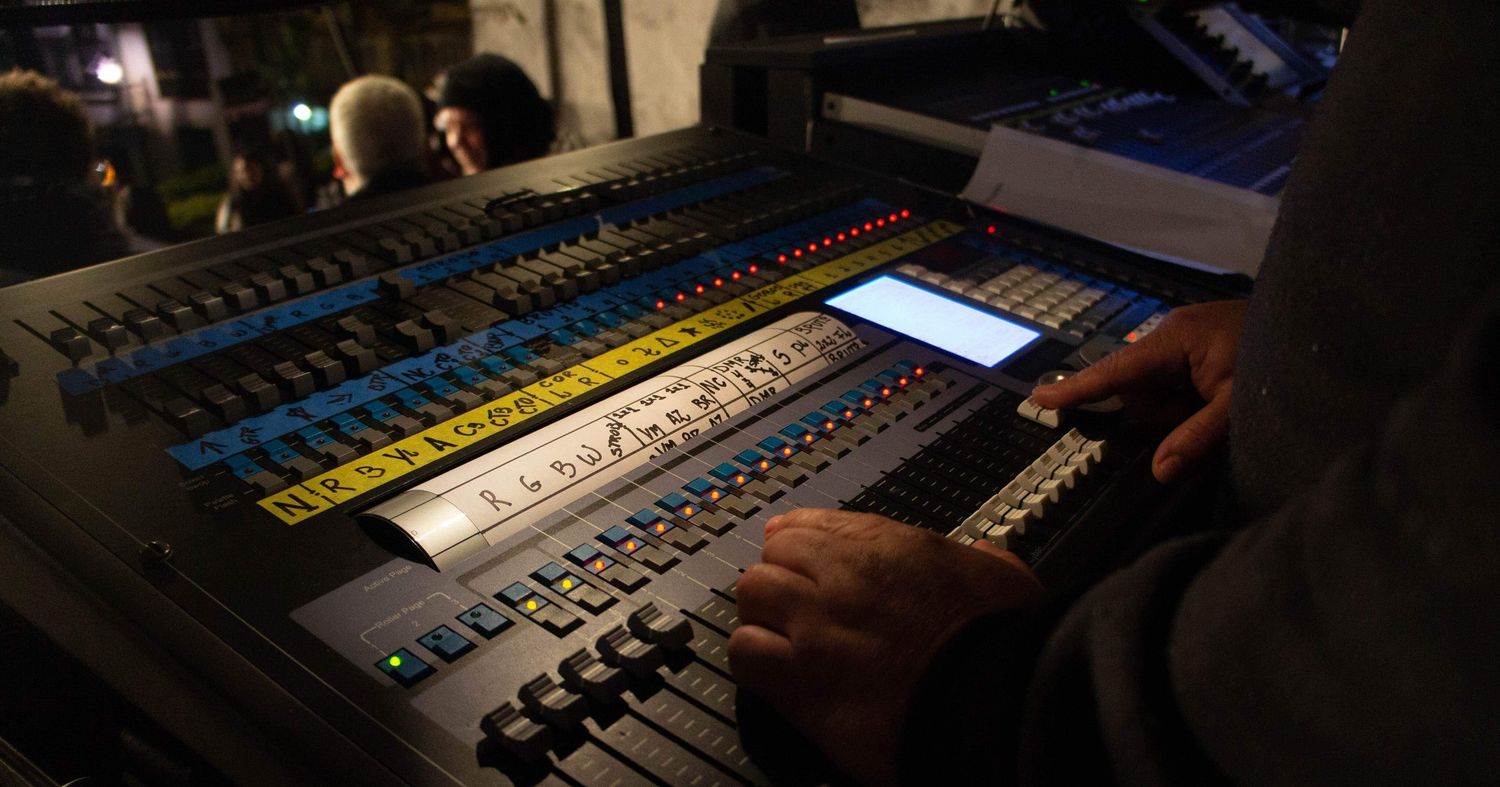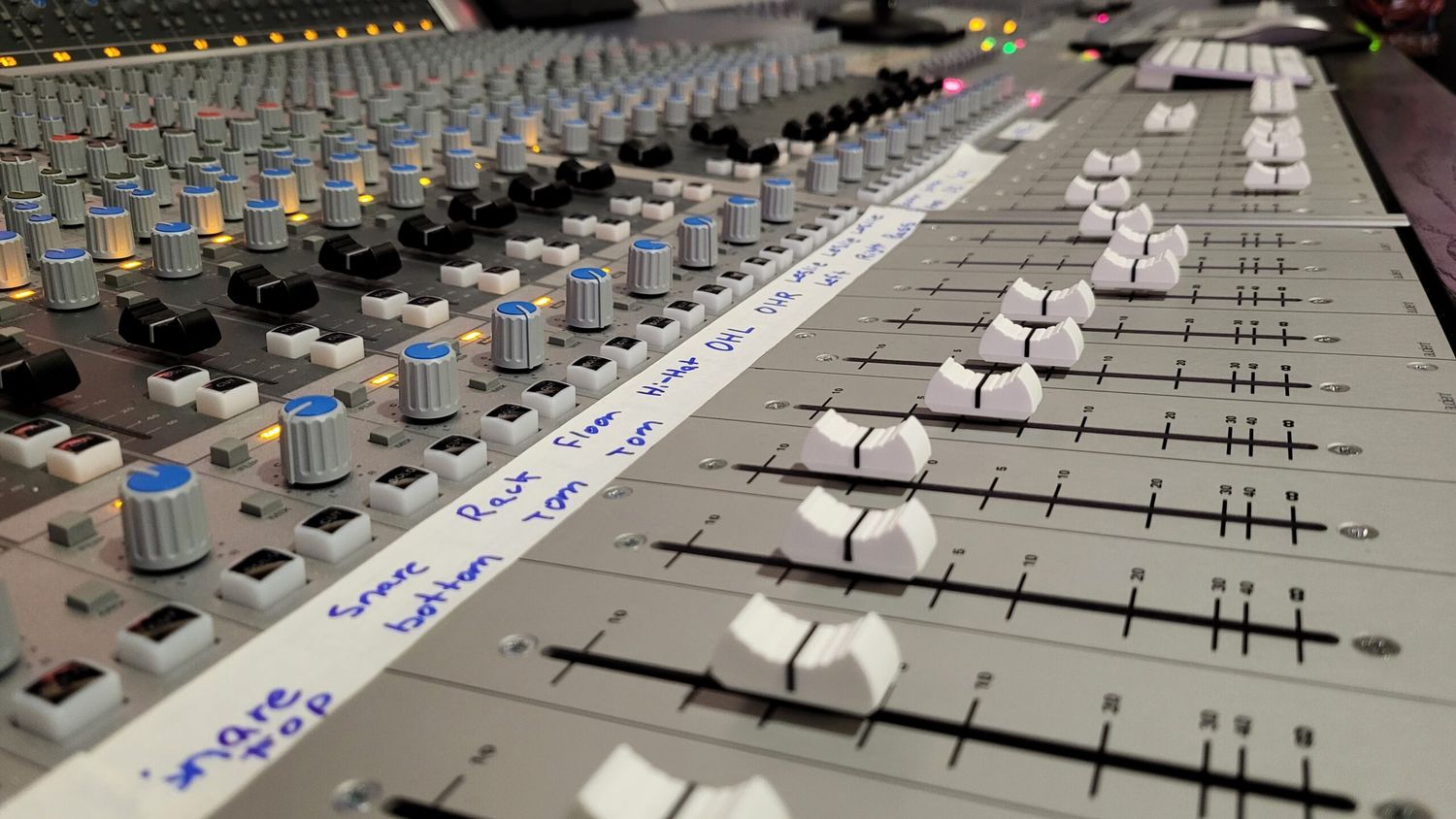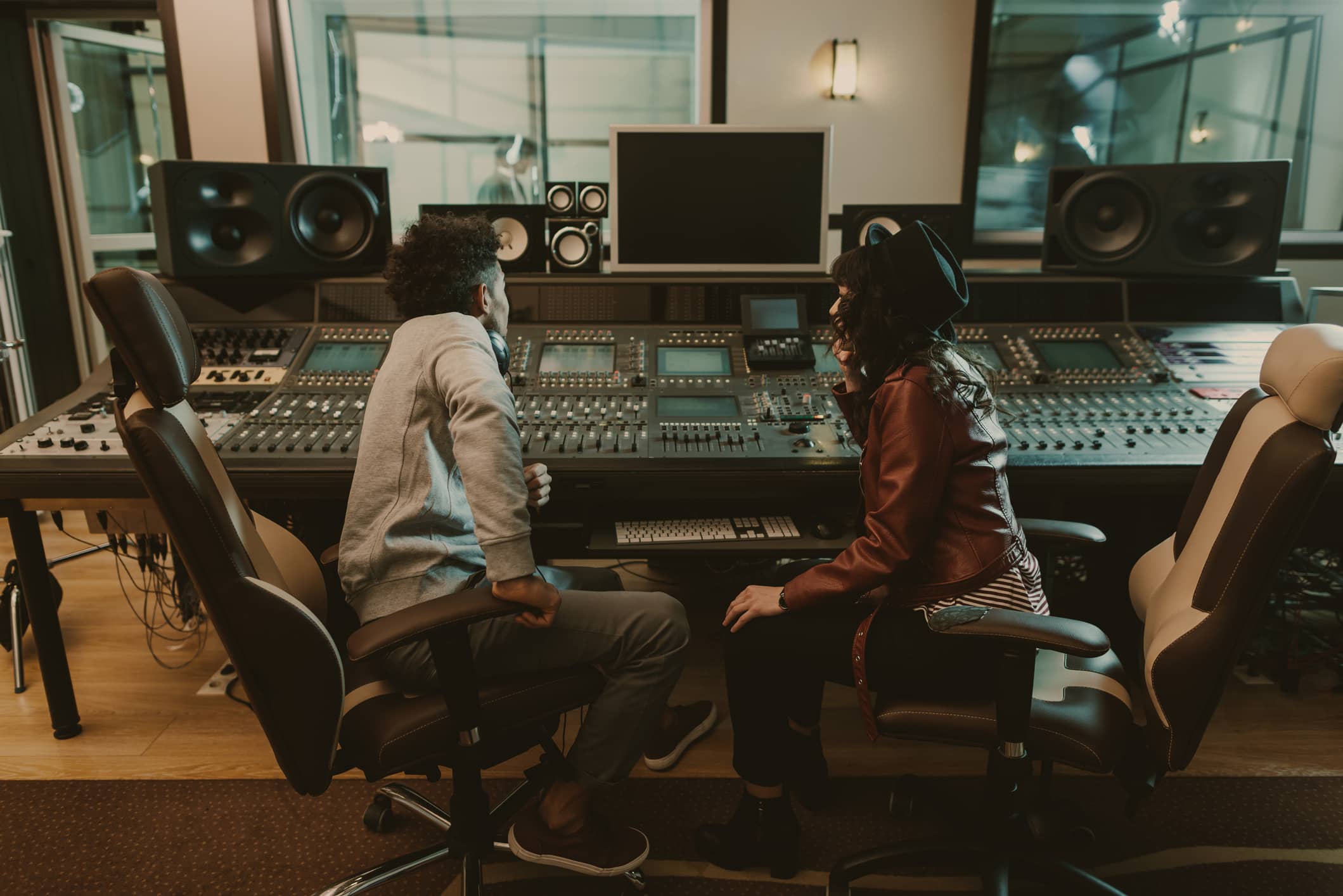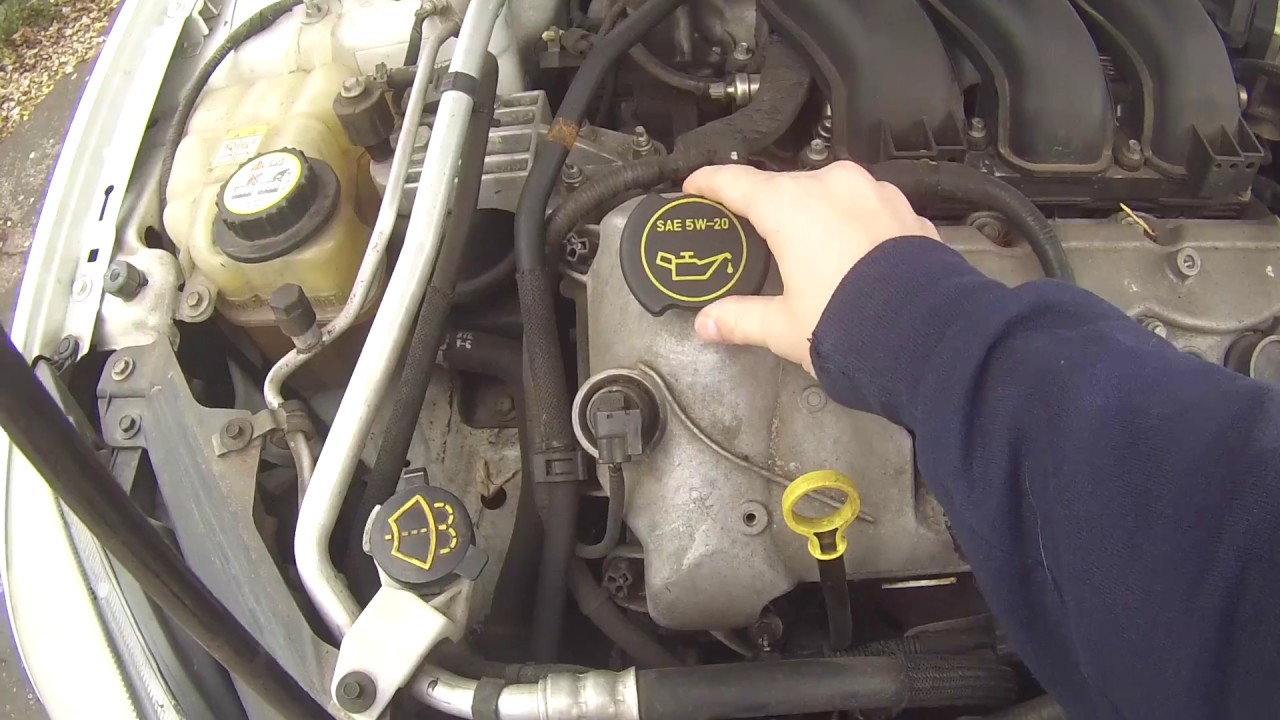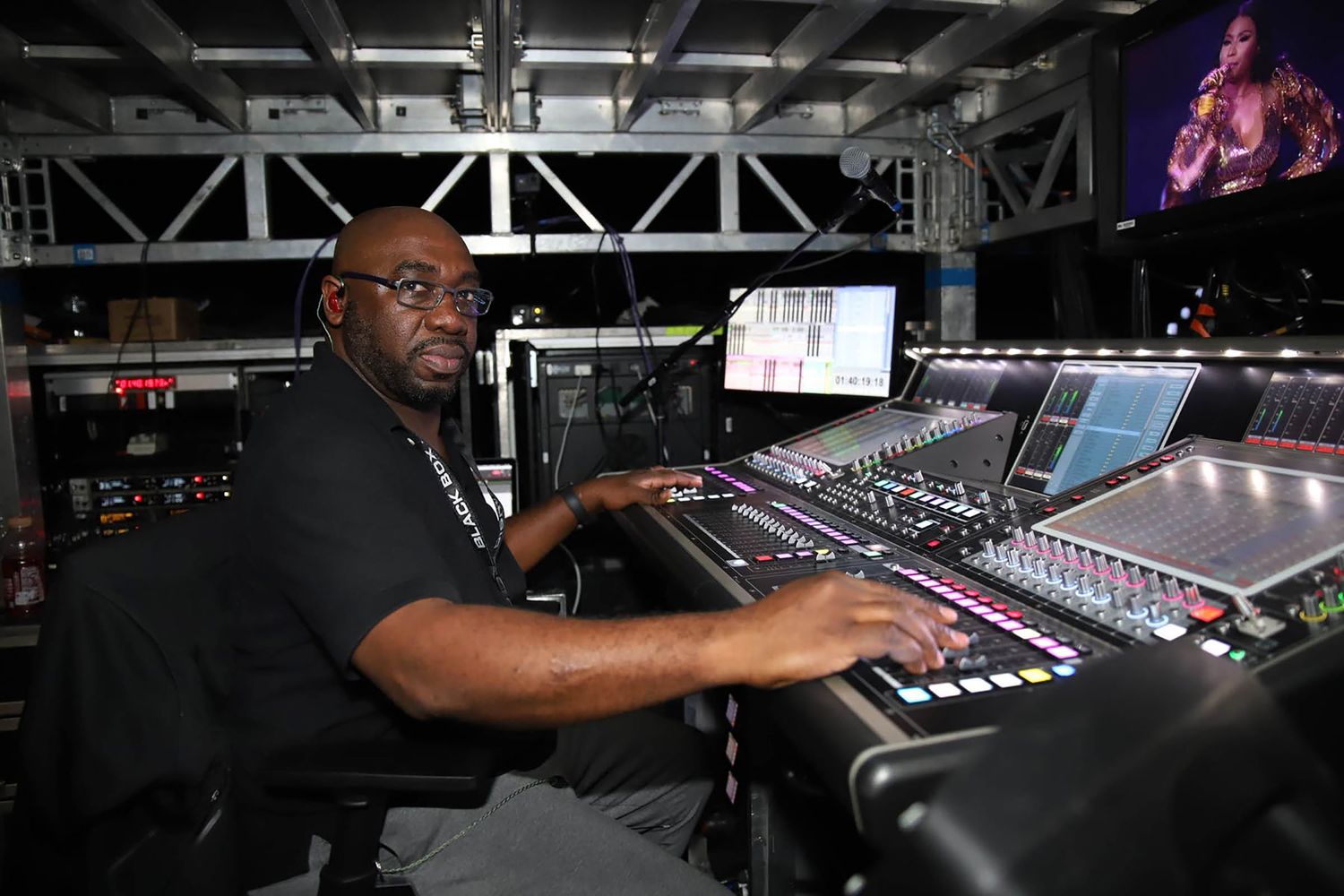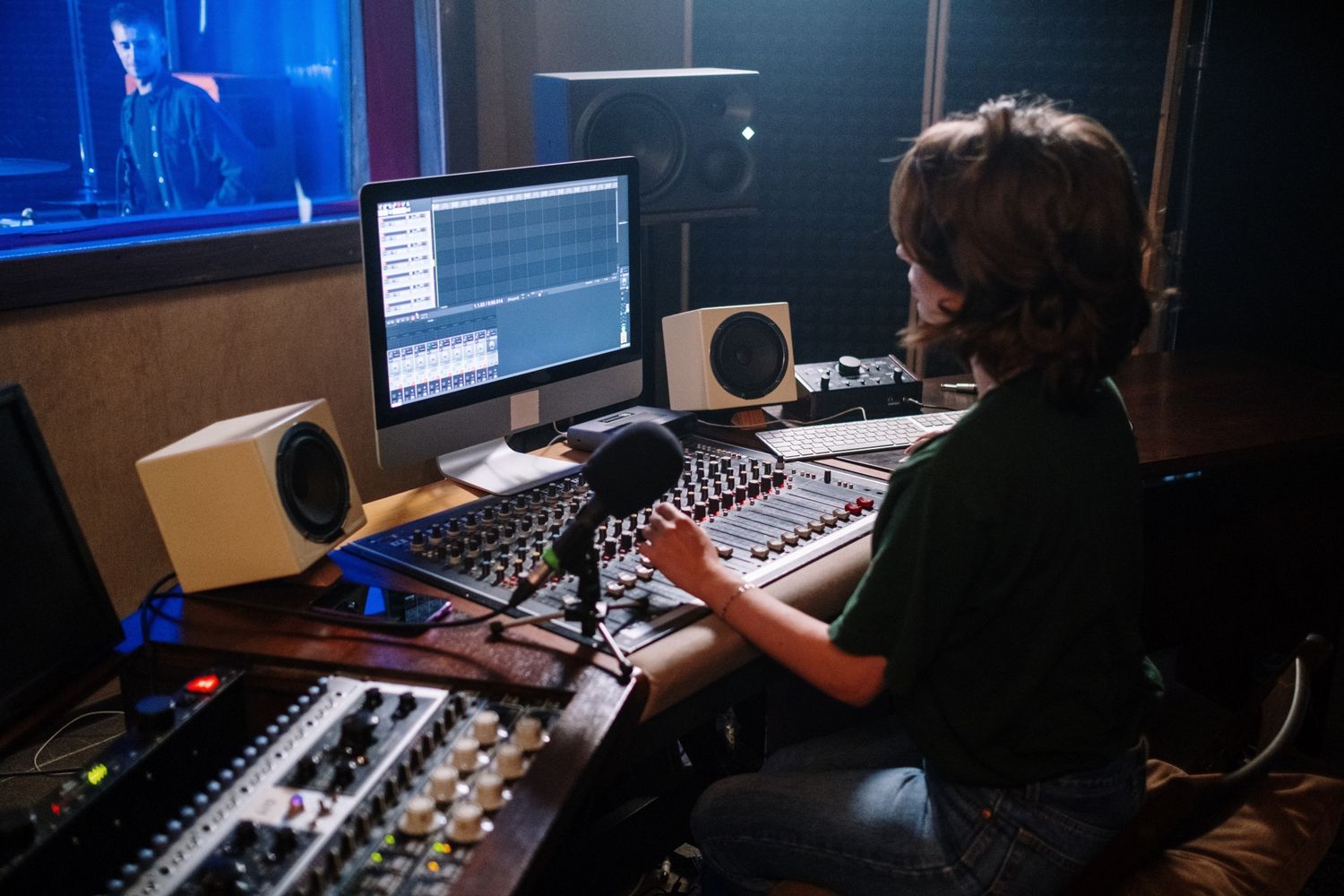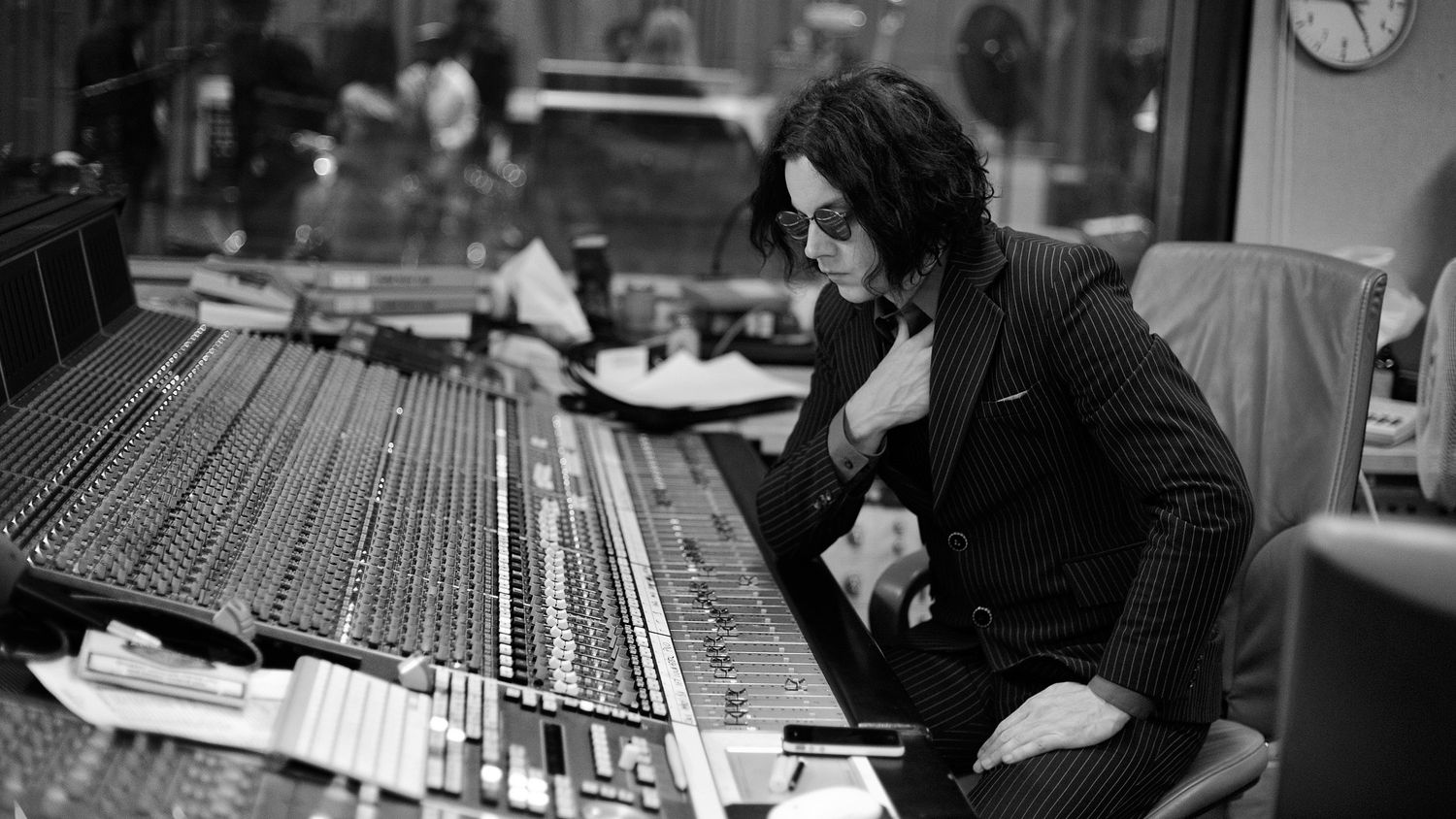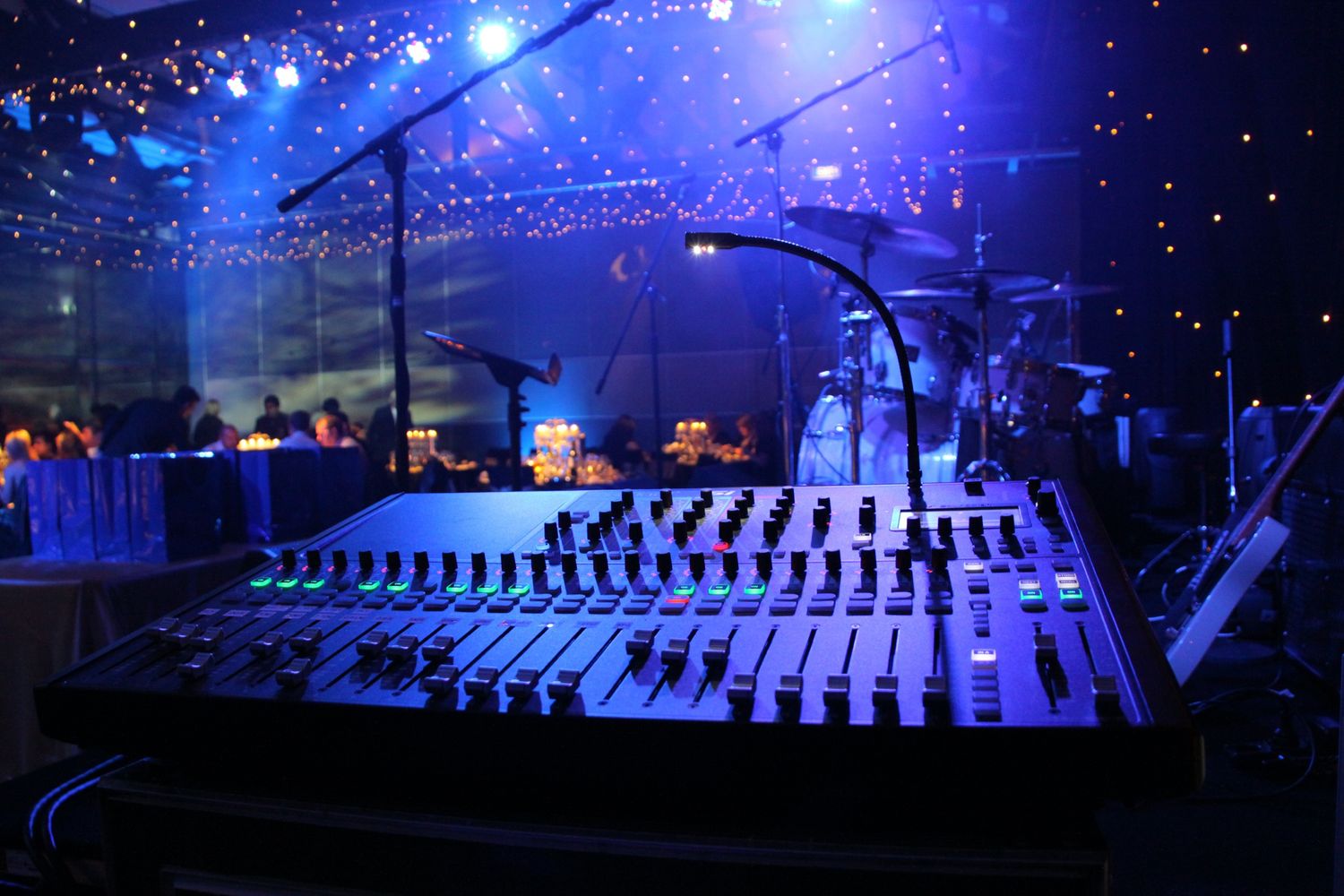Home>Production & Technology>Sound Engineer>How Performers Can Communicate With A Sound Engineer


Sound Engineer
How Performers Can Communicate With A Sound Engineer
Published: March 6, 2024
Learn how performers can effectively communicate with a sound engineer to ensure optimal sound quality and a successful live performance. Discover essential tips and techniques for working with a sound engineer.
(Many of the links in this article redirect to a specific reviewed product. Your purchase of these products through affiliate links helps to generate commission for AudioLover.com, at no extra cost. Learn more)
Table of Contents
Introduction
When it comes to delivering an unforgettable live performance, the collaboration between performers and sound engineers is paramount. The seamless harmony between the artists' creative expression and the technical expertise of the sound engineer can elevate a show from good to extraordinary. However, this synergy is only achievable through effective communication and a mutual understanding of each other's roles and responsibilities.
In the dynamic world of live sound production, the sound engineer serves as the guardian of audio quality, responsible for ensuring that every note, lyric, and beat resonates with clarity and precision. Their technical prowess and acute attention to detail make them the unsung heroes behind the scenes, working tirelessly to orchestrate the perfect sonic landscape for the audience to immerse themselves in.
On the other hand, performers are the heart and soul of the show, pouring their passion and energy into each performance to captivate and enthrall their audience. Their ability to connect with the crowd and convey their artistry hinges not only on their talent but also on the seamless integration of sound engineering expertise.
In this article, we delve into the intricacies of how performers can effectively communicate with sound engineers to optimize their live performances. From understanding the role of a sound engineer to mastering effective communication techniques and troubleshooting potential issues, this guide aims to empower performers with the knowledge and insights to foster a harmonious and productive relationship with their sound engineers.
As we embark on this exploration, it's essential to recognize that the collaboration between performers and sound engineers is a symbiotic relationship, where each party's contribution is indispensable to the overall success of a live performance. By embracing open communication, mutual respect, and a shared commitment to delivering an exceptional auditory experience, performers and sound engineers can coalesce their talents and technical expertise to create magic on stage.
Understanding the Role of a Sound Engineer
At the heart of every remarkable live performance lies the expertise of a sound engineer, whose role extends far beyond simply operating mixing consoles and adjusting sound levels. A sound engineer is a maestro of audio production, meticulously crafting the sonic tapestry that envelops the audience and enhances the performers' artistry. To truly appreciate the significance of effective communication with a sound engineer, it is essential for performers to grasp the multifaceted responsibilities that define the role of these audio artisans.
Technical Proficiency
Sound engineers are adept in the technical intricacies of audio equipment, from the configuration of microphones and amplifiers to the operation of digital audio workstations. Their proficiency extends to understanding acoustics, signal flow, and the nuances of different sound reinforcement systems. This technical acumen enables them to harness the full potential of audio technology, ensuring that the performers' sonic expressions are faithfully conveyed to the audience.
Audio Quality Assurance
One of the primary responsibilities of a sound engineer is to uphold impeccable audio quality throughout the performance. This encompasses a spectrum of tasks, including sound checks, equalization, and monitoring sound levels to prevent distortion or inconsistencies. By meticulously fine-tuning the audio parameters, sound engineers strive to create a balanced and immersive auditory experience for the audience, where every instrument and vocal nuance is rendered with clarity and precision.
Collaboration and Adaptability
Sound engineers are adept collaborators who seamlessly integrate their technical expertise with the performers' artistic vision. They work closely with the artists to understand their sonic preferences, stage layout, and performance dynamics, tailoring the audio production to complement and elevate the live experience. Moreover, sound engineers exhibit remarkable adaptability, swiftly addressing unforeseen challenges such as equipment malfunctions or sudden changes in the performance setlist, ensuring a seamless audio continuity.
Precision and Attention to Detail
The meticulous nature of a sound engineer's role demands unwavering attention to detail. From managing audio cues and transitions to synchronizing sound effects and backing tracks, every aspect of the performance's audio landscape is meticulously orchestrated by the sound engineer. Their precision ensures that the audio elements seamlessly intertwine with the performers' on-stage dynamics, creating a cohesive and captivating sonic narrative for the audience.
Emotional Impact
Beyond the technical facets, sound engineers are adept at harnessing the emotional impact of sound. They understand the profound influence of audio on the audience's emotional engagement and work diligently to evoke the desired sentiments through the sonic ambiance. By skillfully manipulating audio dynamics and spatial effects, sound engineers contribute to the immersive and emotive experience that defines a truly memorable live performance.
In essence, the role of a sound engineer transcends technical proficiency, encompassing a profound dedication to enhancing the performers' artistry and captivating the audience through the transformative power of sound. Understanding and appreciating the multifaceted responsibilities of a sound engineer lays the foundation for performers to effectively communicate and collaborate with these audio virtuosos, ultimately elevating the live performance to new heights of sonic excellence.
Preparing for Communication
Before stepping onto the stage, performers must lay the groundwork for effective communication with their sound engineer. This preparatory phase serves as the cornerstone for a cohesive and productive collaboration, ensuring that both parties are aligned in their objectives and equipped with the essential tools for seamless interaction. Here's a comprehensive guide on how performers can prepare for communication with their sound engineer:
Familiarize Yourself with the Venue and Equipment
Prior to the performance, familiarize yourself with the venue's layout and the audio equipment at your disposal. Understanding the stage dimensions, speaker placements, and acoustic characteristics of the venue empowers performers to convey specific audio preferences and requirements to the sound engineer effectively. Additionally, acquainting yourself with the available microphones, monitors, and signal processing equipment enables you to articulate your technical needs with clarity and precision.
Develop a Setlist and Sound Requirements
Crafting a detailed setlist and outlining specific sound requirements is instrumental in facilitating effective communication with the sound engineer. Clearly delineate the sequence of songs, transitions, and any audio effects or backing tracks that will be integrated into the performance. By providing the sound engineer with a comprehensive overview of the sonic elements within each musical piece, performers enable them to prepare and optimize the audio production accordingly.
Establish Open Channels of Communication
Open and transparent communication channels are pivotal in fostering a harmonious partnership between performers and sound engineers. Prior to the performance, establish clear lines of communication with the sound engineer, ensuring that both parties are accessible to discuss any audio-related queries or adjustments. Whether it's through in-person meetings, digital communication platforms, or pre-performance briefings, maintaining open channels of dialogue cultivates a collaborative environment conducive to effective audio production.
Rehearse and Fine-Tune Sound Dynamics
During rehearsals, focus on fine-tuning the sound dynamics and audio nuances of each musical piece. Pay close attention to vocal levels, instrument balances, and any specific audio effects or cues embedded within the performance. By meticulously refining the sonic intricacies during rehearsals, performers gain a comprehensive understanding of the sonic landscape, enabling them to articulate their audio preferences and adjustments to the sound engineer with precision and confidence.
Embrace Flexibility and Adaptability
In the dynamic realm of live performances, embracing flexibility and adaptability is paramount. Anticipate potential audio challenges or last-minute adjustments, and communicate these possibilities to the sound engineer. By fostering a mindset of adaptability, performers and sound engineers can collaboratively navigate unforeseen audio scenarios, ensuring that the performance maintains its sonic integrity and captivates the audience seamlessly.
By diligently preparing for communication with the sound engineer, performers lay the groundwork for a synergistic partnership that harmonizes technical expertise with artistic expression. This preparatory phase not only fosters effective communication but also cultivates a shared commitment to delivering an exceptional auditory experience, setting the stage for a truly remarkable live performance.
Effective Communication Techniques
Effective communication between performers and sound engineers is the linchpin of a successful live performance, facilitating a seamless fusion of artistic expression and technical precision. By mastering effective communication techniques, performers can articulate their sonic vision with clarity and coherence, empowering sound engineers to translate their creative aspirations into a captivating auditory experience. Here's an in-depth exploration of the essential communication techniques that underpin this collaborative synergy:
Articulate Clear Audio Preferences
Articulating clear and concise audio preferences is fundamental to effective communication with the sound engineer. Whether it pertains to vocal levels, instrument balances, or spatial effects, performers should express their sonic expectations in a detailed yet accessible manner. By using descriptive language to convey their audio preferences, such as "warm and intimate vocals" or "expansive and immersive instrumentals," performers provide the sound engineer with a nuanced understanding of their sonic aspirations, fostering a cohesive audio production.
Active Listening and Feedback
Active listening forms the bedrock of productive communication between performers and sound engineers. Actively engage in discussions with the sound engineer, attentively absorbing their technical insights and recommendations. Additionally, provide constructive feedback based on your auditory experience during rehearsals and sound checks. This reciprocal exchange of perspectives cultivates a collaborative environment, where both parties contribute to refining the audio production, ultimately enhancing the sonic quality of the performance.
Utilize Visual and Analogous References
Incorporating visual and analogous references can significantly enhance the clarity of communication regarding audio preferences. Whether it involves referencing the sonic ambiance of a specific song or drawing parallels to the audio dynamics of renowned live performances, visual and analogous references serve as invaluable communication tools. By leveraging visual aids, such as waveform illustrations or audio frequency charts, performers can elucidate their sonic vision with visual precision, enabling the sound engineer to actualize their auditory aspirations effectively.
Establish a Shared Vocabulary
Establishing a shared vocabulary that encapsulates audio descriptors and technical terms fosters a streamlined and coherent communication process. Collaboratively define and standardize audio descriptors, such as "crisp highs," "punchy lows," or "spacious reverb," to create a common lexicon that resonates with both performers and sound engineers. This shared vocabulary eliminates ambiguity and ensures that audio preferences and adjustments are articulated with precision and mutual understanding.
Embrace Open Dialogue and Adaptability
Embracing open dialogue and adaptability is pivotal in navigating the dynamic nuances of live audio production. Encourage a culture of open communication, where performers and sound engineers can freely exchange ideas, address audio concerns, and explore innovative sonic possibilities. Furthermore, maintain a flexible outlook, readily adapting to audio adjustments and refinements suggested by the sound engineer. This collaborative fluidity cultivates a symbiotic relationship, where the convergence of artistic expression and technical finesse flourishes harmoniously.
By integrating these effective communication techniques into their collaborative endeavors, performers and sound engineers can coalesce their talents and technical expertise to orchestrate a superlative auditory experience. This harmonious fusion of artistic vision and technical acumen not only elevates the live performance but also engenders a profound resonance with the audience, culminating in an unforgettable sonic spectacle.
Troubleshooting and Problem-Solving
In the realm of live performances, unforeseen audio challenges can arise, necessitating adept troubleshooting and problem-solving capabilities from both performers and sound engineers. The ability to swiftly address and resolve audio issues is pivotal in maintaining the sonic integrity of the performance and ensuring a seamless auditory experience for the audience. Here's an in-depth exploration of the essential strategies and approaches for troubleshooting and problem-solving in the context of live audio production:
Proactive Sound Checks and Rehearsals
Prior to the live performance, proactive sound checks and rehearsals serve as preemptive measures to identify and rectify potential audio anomalies. By meticulously scrutinizing the audio dynamics during sound checks, performers and sound engineers can detect and address issues such as feedback, audio distortion, or imbalanced sound levels. Additionally, conducting comprehensive rehearsals enables the collaborative refinement of audio cues, transitions, and technical intricacies, preemptively mitigating potential audio hitches during the live performance.
Clear Communication of Audio Anomalies
In the event of encountering audio anomalies during rehearsals or sound checks, clear and concise communication between performers and sound engineers is paramount. Articulate the specific audio irregularities or malfunctions with descriptive precision, enabling the sound engineer to swiftly diagnose and troubleshoot the issues. Whether it pertains to erratic microphone feedback, sudden audio dropouts, or unanticipated signal interference, transparent communication empowers sound engineers to implement targeted solutions effectively.
Adaptive Problem-Solving Mindset
Embracing an adaptive problem-solving mindset is instrumental in navigating unforeseen audio challenges during live performances. Sound engineers adeptly leverage their technical expertise to diagnose and rectify audio anomalies in real time, swiftly implementing adjustments to restore sonic coherence. Simultaneously, performers exhibit flexibility and composure, readily adapting to any audio refinements or technical alterations suggested by the sound engineer. This collaborative problem-solving dynamic fosters a seamless audio continuity, ensuring that the performance transcends potential audio disruptions with finesse.
Contingency Planning for Audio Contingencies
In anticipation of potential audio contingencies, performers and sound engineers can collaboratively devise contingency plans to address unforeseen audio challenges. Whether it involves backup audio equipment, alternative signal routing strategies, or predefined protocols for addressing specific audio anomalies, contingency planning fortifies the collaborative partnership with a proactive approach to mitigating potential disruptions. This preparatory foresight empowers performers and sound engineers to navigate audio contingencies with agility and precision, safeguarding the sonic integrity of the performance.
Post-Performance Audio Evaluation and Reflection
Following the live performance, conducting a comprehensive audio evaluation and reflection serves as a valuable learning opportunity for both performers and sound engineers. Reflect on the audio dynamics, technical adjustments, and problem-solving strategies employed during the performance, identifying areas of success and potential enhancements. This reflective process cultivates a continuous improvement ethos, fostering a collaborative evolution of audio production techniques and problem-solving approaches for future performances.
By integrating these proactive strategies and collaborative approaches into their problem-solving endeavors, performers and sound engineers fortify their capacity to navigate and resolve unforeseen audio challenges with dexterity and precision. This proactive problem-solving synergy not only safeguards the sonic integrity of live performances but also engenders a resilient partnership that thrives amidst the dynamic nuances of live audio production.
Conclusion
In the realm of live performances, the symbiotic relationship between performers and sound engineers forms the bedrock of an extraordinary auditory experience. As the final notes reverberate through the venue, the culmination of their collaborative synergy resonates with the audience, transcending mere sound to evoke emotions, memories, and sheer exhilaration. The journey of effective communication, meticulous preparation, and adept problem-solving encapsulates the essence of this partnership, culminating in a sonic spectacle that lingers in the hearts and minds of the audience.
Effective communication between performers and sound engineers is not merely a technical exchange of audio preferences and adjustments; it is a harmonious dialogue that intertwines artistic vision with technical finesse. By articulating their sonic aspirations with clarity and coherence, performers empower sound engineers to sculpt a sonic landscape that magnifies the emotional impact of their artistry. This communication transcends words, weaving a narrative of sonic creativity that unfolds with each melodic cadence and resonant harmony.
The preparatory phase serves as the crucible in which the alchemy of collaboration is forged. From familiarizing themselves with the venue's acoustic nuances to meticulously fine-tuning sound dynamics during rehearsals, performers lay the groundwork for a seamless partnership with their sound engineers. This preparatory diligence not only fosters effective communication but also cultivates a shared commitment to delivering an exceptional auditory experience, setting the stage for a truly remarkable live performance.
In the face of unforeseen audio challenges, the adept problem-solving capabilities of performers and sound engineers shine through, fortifying the sonic integrity of the performance. Their adaptive mindset, proactive measures, and collaborative contingency planning converge to navigate potential disruptions with finesse, ensuring that the performance transcends any audio anomalies with unwavering coherence.
As the curtain falls and the applause reverberates, the collaborative journey of performers and sound engineers reverberates as a testament to the transformative power of sound. Their partnership transcends the technical realm, intertwining creativity, technical expertise, and unwavering dedication to craft an auditory experience that transcends the realms of mere sound, resonating as an indelible symphony of artistry and technical finesse.
In essence, the collaboration between performers and sound engineers is a testament to the transformative potential of human connection, where the convergence of artistry and technical acumen coalesces to create magic on stage. It is a testament to the profound resonance that emerges when creativity and technical expertise harmonize, transcending the confines of sound to evoke emotions, memories, and sheer exhilaration in the hearts of the audience.

